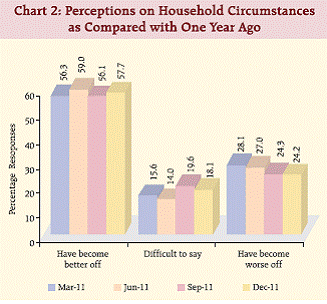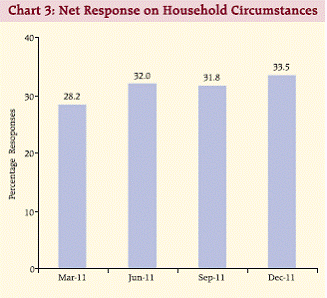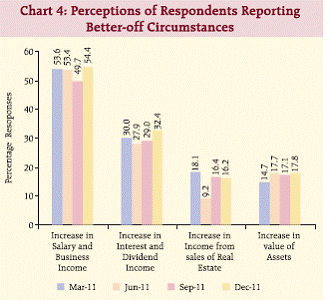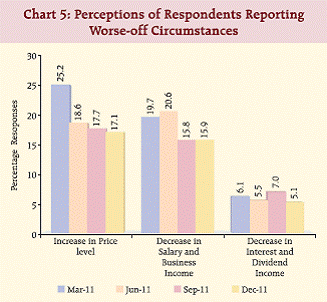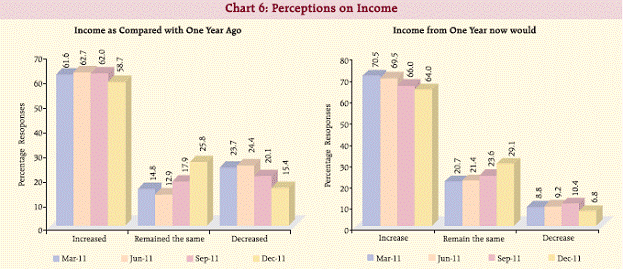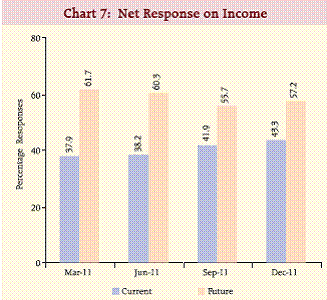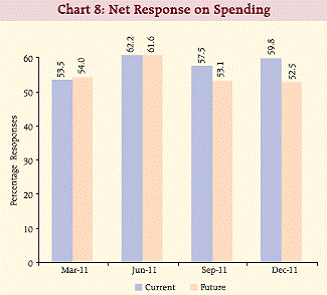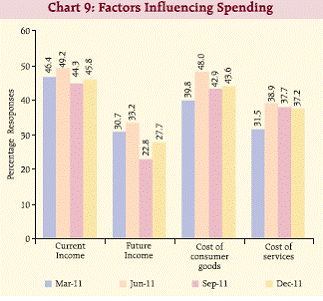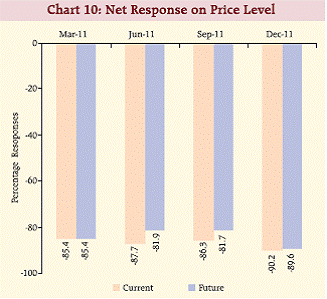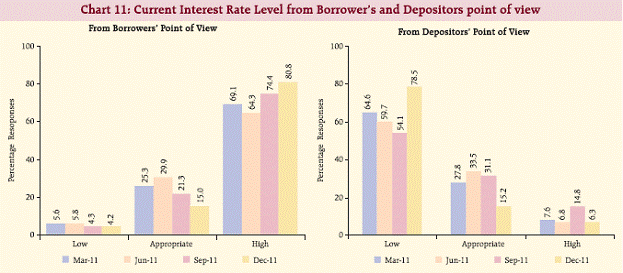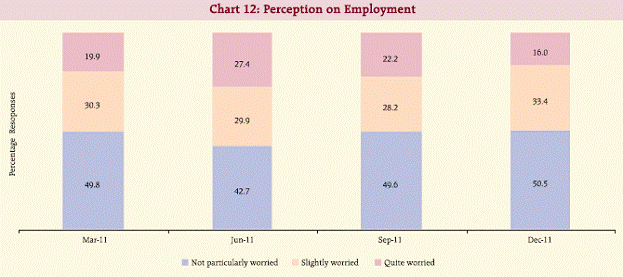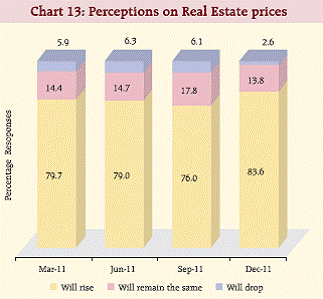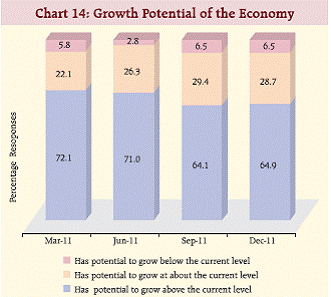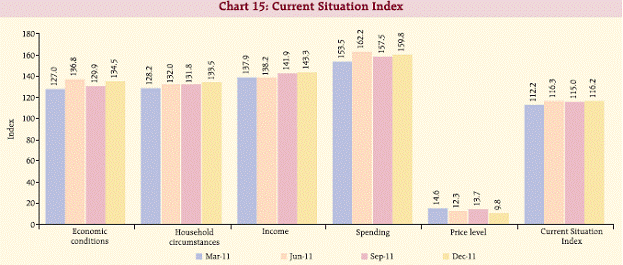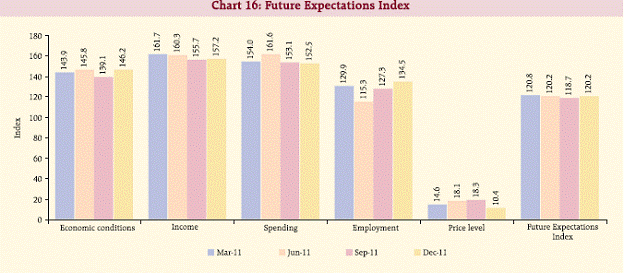Consumer Confidence Survey: December 2011* - RBI - Reserve Bank of India
Consumer Confidence Survey: December 2011*
This article presents the salient findings of the Consumer Confidence Survey conducted in December 2011, the 7th round in the series. It gives an assessment of the consumer sentiments of the respondents based on their perceptions of the general economic conditions and personal financial situation. The assessments are analysed in two parts, viz., current situation as compared to a year ago and expectations for a year ahead. The survey indicates improvement in the positive perceptions on current and future economic conditions. Although the positive perceptions on household circumstances have marginally increased, about one fourth of the respondents continue to report weakening in this regard. The proportion of respondents reporting increase in income has been high but showed a decline over the last four quarters. Similarly, the proportion of respondents expecting increased future spending is gradually declining. More than half of the respondents reported optimistic perceptions about employment scenario in the economy. Overall consumer confidence appears to have improved marginally, both for current and future periods. I. Introduction The change in consumer confidence has the potential to affect real economic activities in the similar way changes in business sentiments do. Thus, consumer confidence on the current and future economic and personal financial situations is of particular relevance for policy purpose. In this context, consumer confidence surveys are carried out to obtain qualitative information on the above for monitoring the economic situation. Reserve Bank of India has been conducting the Quarterly Consumer Confidence Survey since June 2010. The latest round of the survey was conducted in December 2011. Highlights of the survey results are presented in this report. II. Sampling Design The survey covers six metropolitan cities, viz., Bangalore, Chennai, Hyderabad, Kolkata, Mumbai and New Delhi. Each city is divided into three major areas and each major area is further divided into three subareas. From each sub-area, about 100 respondents are selected randomly. For each round of survey 5,400 respondents are selected (900 from each city). Out of the total 5,400 survey schedules, 5,272 schedules were found to be suitable for further analysis. III. Structure of the Survey Questionnaire The survey schedule consists of qualitative questions pertaining to impression about economic conditions, views on household circumstances, perceptions on price level, perception on employment prospects, developments in real estate prices and views on growth potential of the Indian economy. IV. Survey Results: Key Highlights IV.1 Economic Conditions
IV.2 Household Circumstances
IV.3 Income
IV.4 Consumer Spending
IV.5 Price Level
V. Perceptions on other Macroeconomic Indicators V.1 Interest Rates
V.2 Employment Conditions
V.3 Future Developments in Real Estate Prices
V.4 Growth Potential of the Economy
VI. Current Situation Index and Future Expectations Index
* Prepared in the Department of Statistics and Information Management, New Delhi. The previous article on the subject along with survey schedule and methodology for constructing the confidence index was published in December 2011 issue of RBI Bulletin. |












